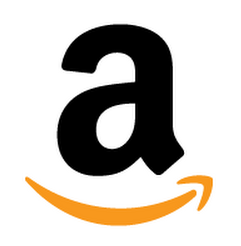
How We Started A $25K/Month Low-Carb, Gluten-Free Desserts Business
Hello! Who are you and what business did you start?
Hi there! My name is David Downing and I’m co-founder & CEO of ChipMonk, a specialty mail-order bakery based in Houston. We make low carb, gluten-free desserts, and ship them all across the country. Our mission is to help people indulge mindfully and make better nutritional choices.
As an early-stage company, we’ve remained focused on growing via e-commerce before we attempt to tackle wholesale or get into grocery stores. Right now, we sell around $25,000 a month, with most of that coming directly from our website.

What's your backstory and how did you come up with the idea?
Before starting ChipMonk in 2019 with my co-founder, Jose Hernández, I spent many years working in management consulting and the commercial aviation industry across various disciplines including audit, financial planning, project management, and competitive research. I guess you could say I’m a “numbers guy”. Over time, I became a bit disillusioned with working at large companies and started to migrate towards the world of startups. Most recently, I was working for a venture capital firm focused on investing in Houston-based startups with high potential.
While working there, I met Jose at one of the firm’s portfolio companies. He and I quickly bonded over our interest in health and exercise, and we ended up becoming roommates. Nearly every week, he and I would talk about wanting to do something on our own. It’s almost contagious when you work with startups and entrepreneurs daily. More often than not, the “great” ideas we had would quickly turn out to be duds after a few minutes of Google research.

The interesting thing about Jose is that he was diagnosed with type 2 diabetes 4 years ago, but, despite his doctor trying to prescribe metformin, he managed to get his blood sugar back in check via a strict low carb, high-fat diet. Unfortunately, sweets were a constant issue for him because he loved to eat desserts, but he was well aware of what they could do to his blood sugar and energy levels.
One weekend, out of a bout of depression caused by yet another failed business idea, Jose decided to bake his own desserts but decided to use better-for-you ingredients like almond flour and monk fruit sweetener. Through the process, he made some low carb chocolate chip cookies that tasted just as good as the real thing. He gave me some to taste and then it just clicked for both of us.
One in three people in the United States are dealing with diabetes or pre-diabetes, yet, to get a healthier, satisfying cookie, Jose had to make his own. It seemed like a big opportunity to fill a market gap. We took his cookies to our co-working office, set up a little table, and managed to sell some on the spot. Once we saw that people were willing to buy our cookies from us, we jumped in to build the business.
Take us through the process of designing, prototyping, and manufacturing your first product.
Everything started with that first batch of chocolate chip cookies that Jose made in our apartment oven. He used a traditional cookie recipe found online as a starting point and replaced ingredients with ones more suitable for his needs. We bought plastic bags on Amazon and slapped some stickers with our logo on them for the packaging. Our mindset was to immediately try to sell the product, not worrying about perfecting it immediately but improving it gradually over time based on the feedback of real customers.
We started by going to local farmer’s markets on the weekends, handing out samples, and selling boxes of our cookies. It was pretty brutal in the Texas summer heat, and we did all our baking late at night at home since we were still both working full-time jobs. We were determined though, and the positive feedback we were getting from folks kept us going.

Eventually, we learned that to launch a website and ship food products across the country, we had to make our desserts in a commercial kitchen. It was far too costly to build our own kitchen, so we started making phone calls to any place in the city that might have extra space for us to use (e.g., churches, restaurants, fire department stations, catering companies, shared kitchens). Eventually, we connected with a large catering company that allowed us to use their kitchen during the evenings and weekends for an affordable monthly price.

Once we moved into the new space, and as our sales started to grow, we realized that we needed to scale up production. We had no idea how to do this, of course, since neither of us had any real baking experience. To solve the problem, we looked at the University of Houston’s Hilton College of Hotel and Restaurant Management and found a local professor with a background in food safety and commercial baking.
We hired him as a consultant, and he helped us design processes for larger-scale production. We also worked with him to take our recipes to the next level by switching out sugar alcohols for our current sweetener blend of monk fruit and allulose. The professor taught us about unique, natural ingredients like konjac root powder and psyllium husk fiber which we were able to incorporate into our desserts giving them a unique flavor and texture.
He also taught us the basics of shelf-life testing and the types of things you have to monitor to try to make your products stay fresh longer (e.g., water activity).

We learned how important earned media exposure can be, so we are always actively reaching out to influencers, bloggers, YouTubers, and traditional media to see if they’d be interested in sharing our story.
Once we had the recipes and production process down a bit more, we turned our attention to improving our packaging. Luckily for us, my sister-in-law is a professional graphic designer with experience in consumer packaged goods. Working with her, we designed our first custom printed cookie bags and mailer boxes which we ended up sourcing overseas via Alibaba. The first order was a bit scary, but we found a trusted supplier who has since been able to produce high-quality packaging for us at a price we can afford.

Going forward, we are constantly working on improving our base recipes, production processes, and packaging design. It’s an iterative process and we always try to use the voice of our customers as our guide. We’ve got an email subscription list of over 4,000 people now and regularly send them surveys to help give us direction on product development.

Describe the process of launching the business.
Our “launch” involved us creating a Delaware C Corp (via gust.com), creating a PayPal account, getting a card reader, and setting up a booth to sell our cookies at our co-working office and farmer’s markets on the weekends. We baked everything at home and were operating under the Texas Cottage Industry laws which let you sell home-made goods but with some limitations.
From there, we built our first website on Squarespace and created profiles on various social media outlets (@chipmonkbaking on Facebook and Instagram). Eventually, we moved out of our home kitchen into a shared commercial kitchen which let us start selling our products on our website and shipping them across the country. Over time, we upgraded our website and moved it from Squarespace to Shopify. This gave us access to additional applications to improve our sales and conversion rates (e.g., subscription products). It also gave us more flexibility to customize our website’s look and feel.
The business started as a side hustle for us, so we initially funded it with our own money to the tune of $5,000. We ran the business through 2019 without investing much more beyond that. We set a goal of reaching $10,000 in monthly sales by the end of 2019, which we accomplished. With that, we both decided to go full-time on the business and we decided to raise money from friends, family, and a crowdsourcing platform called NextSeed.
All-in-all, we’ve now raised $350,000 which we are using to build out our own bakery and warehouse space and to hire a few amazing people to help us with marketing and operations. Our goal is to use the money to build a foundation for growth for the next few years.
Looking back, the big turning point for us came from our exposure on some key YouTube Channels (KetoConnect) and media outlets (Houston Chronicle, Fox 26 Morning News). All of a sudden, we got exposed to thousands of people interested in our story and products, and we saw major spikes in sales that helped build a strong base of repeat customers. We learned how important earned media exposure can be, so we are always actively reaching out to influencers, bloggers, YouTubers, and traditional media to see if they’d be interested in sharing our story.
Know your numbers and be very conservative with financial forecasts. Make sure you understand your profitability metrics and plan for times where your sales goals will not be met due to unseen circumstances.
Since launch, what has worked to attract and retain customers?
We do our best to make our customer experience memorable, and that goes beyond just making a tasty product. We handwrite thank you notes for every single order we pack and ship, and we regularly communicate with our customers via a weekly email digest and our social media channels. We frequently survey our top customers to get feedback on changes to things like our website, shipping policies, and new product development. We also like to offer secret bonus rewards to our loyal customers. For example, anyone who orders over $100 on our website gets a free ChipMonk T-Shirt (not advertised but we’ve had plenty of folks get one).
To grow our customer base, we run paid ads on Google, Bing, Amazon, and Facebook using a variety of copy, creatives, and target audiences. We have cold audience ads as well as ads that retarget people who have taken specific actions on our website or social media channels. We try to test out different variations until we find ones that work (3X ROAS or better). From there, we’ll scale up ad spend.
When we started, we employed 3rd party agencies to help us in this area, but we’ve recently hired a social media and digital marketing manager who oversees this part of the business for us.
Outside of pay per click advertising, we’ve also experimented with running paid video ads on popular YouTube channels, offering free samples via field marketing events in our home town of Houston, working with PR firms to get our company covered in articles and news pieces, and constantly reaching out to influencers in the keto, diabetes, or gluten-free space to see if they’d be willing to share our products with their followers. We also just brought on an agency to help us work on SEO for our website.

By and far the greatest marketing channel for us is email. We use Klaviyo for regular email blasts to our subscribers as well as automated flow emails based on user behavior on our website (e.g., automated message to someone who added a product to their cart but didn’t check out). Our email campaign open rates are typically over 15% and in recent months they generated nearly $10,000 in sales.
Each week and month we review our advertising spend and key metrics like cost per click (CPC), cost per acquisition (CPA), conversion rate, and return on ad spend (ROAS). We try to keep our total ad spend limited to 10-20% of total revenue, which often sees us reducing budgets in some channels and investing in new experimental ones.
How are you doing today and what does the future look like?
Right now our sales are hovering around $20,000-$25,000 a month, which is quite a bit lower than where we had been in the middle of 2020. Of that total revenue amount, about 80% comes from our website chipmonkbaking.com, 10% comes from Amazon, and 10% comes from small wholesale accounts.
Know that you are in this for the long haul. If you’re not willing to spend years on this project, you may want to reconsider. Entrepreneurship isn’t for everyone, and that’s okay.
The team has been hard-pressed to figure out why our sales have declined. Data-wise we’ve seen a drop in our website conversion rates and an overall decrease in the effectiveness of our PPC ad campaigns.
This is forcing us to explore other marketing channels and to try out new things like redesigning our website to improve speed and usability, testing out different shipping fees and free shipping thresholds, exploring new wholesale opportunities, and testing out new products and packaging. At the end of the day, we know the economy is in a really tough position right now, so a part of our plan also involves just tightening our budgets and conserving our cash where we can.
In more exciting news, our bakery will be operational by the end of October 2020. This will give us much more operational flexibility and will also allow us to sublease some of our space to other small food companies here in Houston. I’m excited to build a type of incubator space where Jose and I can help other companies tackle some of the challenges we’ve already faced.
Through starting the business, have you learned anything particularly helpful or advantageous?
Here are a few lessons learned from my experience thus far:
Know your numbers and be very conservative with financial forecasts. Make sure you understand your profitability metrics and plan for times where your sales goals will not be met due to unseen circumstances.
Know your weaknesses and hire or partner with someone who offsets them. I’m a numbers guy and am not a huge fan of getting out there and talking to a bunch of people, so it’s great that my co-founder Jose is an extrovert who loves telling the story of ChipMonk and spreading awareness for our brand.
Have hard conversations. Whoever you work with (agencies, friends, employees), make sure you hold them accountable when it comes to your business. Set tangible goals and measure whether they’re being met. Don’t be afraid to part ways with people or companies that are getting in the way of your longer-term goals.
Don’t let your emotions control you. Anger in particular is tough for me. Things go wrong all the time when you have a small business, and often my first gut reaction is to get angry. This helps no one. As a leader, you need to stay calm when the shit hits the fan because everyone is looking to you for direction. Focus on how to fix things, because getting angry at yourself or others will not improve your situation.
Learn to disconnect. As a small business owner, work can be all-consuming which can easily lead to burnout. Make sure you schedule time off where you put the phone down and spend time relaxing alone or with your friends and family. If you do not take the time to recharge, you will eventually feel overwhelmed and be ineffective in leading your company. Good sleep, diet, and exercise are also key here.
What platform/tools do you use for your business?
- Email Marketing: Klaviyo
- Website: Shopify
- Shipping: Shipstation
- Team Admin/Communications: G Suite
- Social Media Planning: Hootsuite
- Accounting: Quickbooks Online (plus Webgility to sync our e-commerce transactions)
- Lots of Microsoft Excel for tracking things like product costs, pricing analysis, and recipes
What have been the most influential books, podcasts, or other resources?
Recently I read Ramping Your Brand: How to Ride the Killer CPG Growth Curve by James Richardson, and it was eye-opening on how to think about longer-term strategy as an emerging specialty food company. He also has an amazing podcast on the subject called Startup Confidential which I highly recommend to anyone trying to launch a new CPG company.
Outside of that, I love Tim Ferriss’ Tools of Titans book, as it has a ton of great advice and perspectives from some of the world’s most successful people. Tim Ferris’ podcast, The Tim Ferris Show is also a great resource for listening and learning from amazing individuals.
Advice for other entrepreneurs who want to get started or are just starting?
Early on, identify your drawbacks (e.g., I’m good at accounting but don’t enjoy sales) and either find a partner or build a team that balances out your weaknesses with their strengths.
Know that you are in this for the long haul. If you’re not willing to spend years on this project (and probably lots of financial and emotional pain), you may want to reconsider. Entrepreneurship isn’t for everyone, and that’s okay.
Get someone who is not your mother or your spouse to buy what you’re hoping to sell as early as you can. You need to prove out that there is real market demand for your product before you invest a ton of money developing it.
Media and influencers can be a great tool for growth early on. Identify outlets or individuals who speak to your target audience. Offer to send them free products or samples. Tell them your personal story. Even one shout out or article about you or your product can be a game-changer in the early days.
Branding and packaging design is no joke. Think about where your product will be purchased then design packaging that will grab someone’s attention and get them to pick up the product. You can always start with something small (PowerPoint anyone?) and refine as you go along. The key is to listen to your customers. Find out what is important to them and make sure you communicate those attributes in your packaging and brand messaging.
Are you looking to hire for certain positions right now?
We’re always interested in meeting talented individuals who may want to work with us. Specifically, we have needs in:
- Daily operations (baking, packing, delivery, etc.)
- Digital marketing and content creation
- Wholesale sales
Anyone can reach out directly to me at [email protected]
Where can we go to learn more?
If you have any questions or comments, drop a comment below!

Download the report and join our email newsletter packed with business ideas and money-making opportunities, backed by real-life case studies.

Download the report and join our email newsletter packed with business ideas and money-making opportunities, backed by real-life case studies.

Download the report and join our email newsletter packed with business ideas and money-making opportunities, backed by real-life case studies.

Download the report and join our email newsletter packed with business ideas and money-making opportunities, backed by real-life case studies.

Download the report and join our email newsletter packed with business ideas and money-making opportunities, backed by real-life case studies.

Download the report and join our email newsletter packed with business ideas and money-making opportunities, backed by real-life case studies.

Download the report and join our email newsletter packed with business ideas and money-making opportunities, backed by real-life case studies.

Download the report and join our email newsletter packed with business ideas and money-making opportunities, backed by real-life case studies.



























































